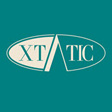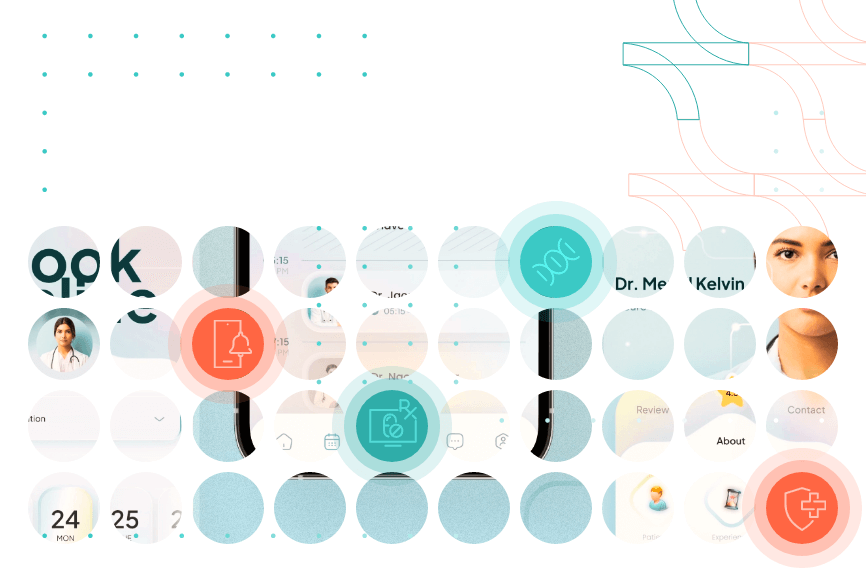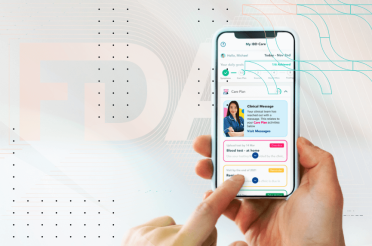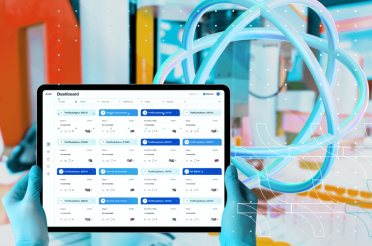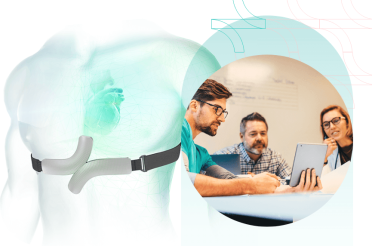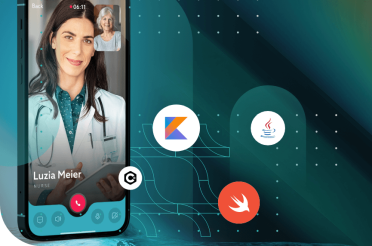The healthcare industry has changed dramatically over the past couple of years. One of the main aspects where the field has seen drastic evolution is telemedicine. The telehealth market blew up during the COVID-19 pandemic as the majority of people needed their doctors but couldn’t see them in person.
The market is expected to grow by 44.4% by 2028. Electronic health records (EHR) have also increased in popularity among healthcare providers. Telemedicine app development has also seen big success in the industry and the idea of combining the two seems perfect.
Being able to mix two approaches in the industry together may be a great idea, but a difficult one to accomplish alone. In this article, we will walk you through exactly how the two can not only function together to improve the workflow of any healthcare facility but also benefit the patients.
What are EHR and telemedicine?
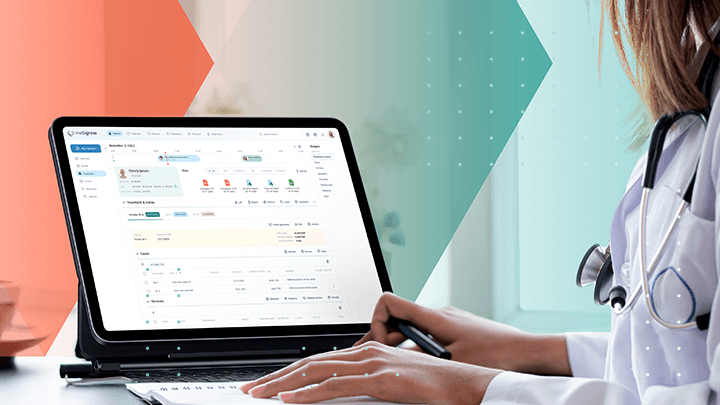
Electronic health records
EHR is a digitized form of patient records that are stored online or on a secure database. These health records can then be accessed by necessarily authorized medical teams without the need to use physical transportation of information between different healthcare facilities.
The data saved on these records may include medical history, prior treatment plans, the status of immunization, allergies, medical procedures, and even current medication.
There is only so much that can be put into paper-written medical records of patients, but there is no limit to the information that can be stored on an electronic one.
What this technology allows are in-depth patient histories to be stored and utilized by healthcare providers without there being the need to create new ones when a person goes to another specialist or even another clinic.

Use the growing importance of telemedicine EHR software to your advantage
Ensure your telemedicine software is secure and compliant today by scheduling a call with one of BGO Software’s experts.

This data can also be analyzed by specific software to determine risk factors and also offer up things a clinician could have missed. EHR systems can assist any medical practice to monitor chronic diseases which is one of the hardest things for healthcare practitioners to manage.
Telemedicine
Telemedicine is the practice of using information and communication technologies to provide access to healthcare services, health monitoring, and medical information in order to achieve better patient outcomes.
Telehealth services are usually there to offer health professionals options to treat and help patients at distant locations. Through the use of a telemedicine app, doctors can remotely consult patients, keep track of vital signs, blood pressure, monitor chronic diseases, and provide educational resources.
Before the pandemic, the use of telehealth services was something not unknown to the world, but not big enough to cause an uproar in the industry. Afterwards, however, telehealth app development sky-rocketed. The use of telemedicine software was 38 (2) times higher as of July 2021 than it had been before the pandemic.
Patients and professionals started seeing telehealth apps and electronic health record systems for that matter completely differently. These technologies were some of the key factors that the industry persevered during the pandemic and are now viewed with more confidence and acknowledgment than ever before.
How important telemedicine EHR software became after COVID?
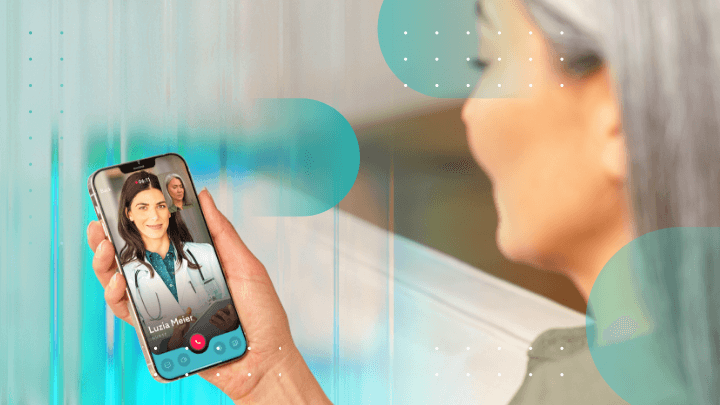
The future of the healthcare industry will be determined by the parts of it now that makes it easier and more efficient. The two biggest parts that do that are electronic medical records and telemedicine.
EHR software development had begun a while ago but saw prominence during the pandemic. Afterward medical practices started utilizing telemedicine systems to expand the reach of EMR software.
It was only natural for the medical community to combine the two technologies that make its functionality far more efficient. In the case where the two work together, each enhances the other and makes the life of patients and doctors far easier.
The job of an EHR system is to make it easy to gather and store patient information. The function of any telehealth platform is to provide communication between patients and their medical professionals.
Together the two technologies make it easier for patients to secure their data even from a distance and provide it in a more detailed manner to their doctors and nurses. It also lowers the number of administrative costs that usually need to be handled by healthcare facilities.
Why isn’t the existing telemedicine EHR software enough?

We have taken a look at a lot of the positives of both telemedicine and EMR systems. What we haven’t talked about is why such an integrated software between the two has to undergo a series of customizations before it can reach its full potential for the individual client.
A main issue in the existing EHR software is the impracticality of its design. It is not made so that anyone can just use it. According to a study conducted by the University of New Mexico, 40% (3) of healthcare practitioners have problems with working with the provided software. They claim it is unclear and hard to manage.
A big part of this complexity is due to the applications being packed with tons of features. You have to take into consideration that doctors and nurses are not and are not required to be tech specialists.

Tackle the customization challenges with existing telemedicine EHR software
Offer a better patient expericne by using one of our software experts to help you develop a user-friendly telemedicine EHR system.
User-friendly interfaces are the way to go. The only way to make sure that is accomplished is by customizing that part of the software yourselves. It is very important to also note that not all currently available EHR software on the market is customizable. It is good practice to look for software that can be integrated.
Core features of telemedicine EHR software

When combining these two technologies, it is vital to note that there are certain features that neither can offer so well. These features are enhanced by the two working side by side with one another, accomplishing something amazing.
Synchronized insurance data
There are many medical systems that keep track of patient insurance. But not all of them have complete coverage and a built-in medical billing module. Medical providers have to have the necessary data before a patient consultation.
Custom EHR software offers exactly that – the ability to keep all of that information in one place and for it to be accessed easily by authorized personnel.
Doctors and nurses aren’t trained to be financial consultants and being able to make it easy for them to just check if a patient is eligible for a certain procedure speeds up the entire process of treating them.
Single-point data entry
The combination of these two technologies reminds of practice management software. It isn’t far off the mark. Having your own EHR system does something similar by providing one single place to keep all the necessary medical information.
During the custom EHR software development process, developers can include a way to systematically enter patient data. This gathering of data would usually happen after a consultation. With the availability of this healthcare software, health data can be easily entered into a patient’s electronic medical record.
One big challenge in keeping track of patient medical information is the fact that different institutions or even different specialists don’t work with the same databases.
Having a patient’s electronic health record available when they visit a certain professional would streamline workflow and limit any mistakes or uncertainties in a patient’s medical history. This way of gathering the data creates a single entry point.
Patient-focused reporting
A big and important part of having medical records is for patients to also be able to view their own personal treatment plans. Usually, however, the data is recorded in a way that is hard for patients to access or even understand.
What systemized electronic health records paired with a telehealth app offer, is the ability for patients to access their data from their homes. In this case, they will also have it available in a manner that is easy to read and understand.
The way this can be achieved fully is by including a short summary of procedures and the treatment plan itself.
Streamlined workflow
A well-designed telemedicine platform coupled with a custom EHR system alleviates administrative tasks for staff. It can handle anything from referral management to online payments. These are a side of the responsibilities usually handled by human staff that take up a lot of their time.
When you develop a telemedicine app a lot of these responsibilities are taken care of. The way this is accomplished is by programming the system to keep track of referrals for example or even for necessary checkup dates, which it can then remind both patients and doctors of.
And afterward you are also able to manage appointments or video calls via the patient portal.
Improved patient experience
Many healthcare software solutions offer a lot of benefits for healthcare organizations. A key feature that outscales those benefits that only custom telemedicine EHR software can put on the table is an optimized patient experience.
A big challenge for telehealth to handle is that because it is happening from a distance people seem to think it can’t be as efficient or productive. When doctors have all the medical history of a patient available in a systemized version, however, that is not the case.
Electronic medical records offer all the necessary information a doctor can need during a consult and also a simplified way for patients to also see and understand what is going on. That way the whole process is easier for both parties to handle and this makes it more efficient.
When a checkup, even if it is on a video call, is more efficient, the patient has a better experience which helps in boosting better outcomes.
Security and compliance
In EHR system development data security is an aspect of the process that always has to be taken into consideration. There are many regulations always protecting patient health information and medical records. It is oftentimes difficult for healthcare providers to keep track of all of them.
What the EHR software development process ensures is that all data entry and protection is regulation compliant. The system also assists organizations in meeting standards in information exchange. An example of such guidelines are the ones defined by HL7 and CCHIT.
Programming telehealth features into existing EHR software
The way the entire system works is usually already having EHR software and adding telemedicine features to the mix. The other option is designing a hybrid system between the two from the very beginning.
Both are valid ways to utilize a tech stack to create a healthcare app. An EHR system collects necessary patient data like immunizations, lab results, billing details, demographics, and more. On the other hand, the telemedicine software is prepared to schedule, follow up, and conduct virtual consultations.
The proper way to use such a system is also one of the best ways to help patients. Doctors and nurses have immediate access to all necessary patient files and medical data that they would need for a consultation.
They also don’t need to worry about managing the appointments as the software does that for them and it also takes care of all aspects of a consultation that have nothing to do with the medical part of it all – like billing for example.
The 3 steps of creating telemedicine EHR software

Whether you want to integrate telemedicine functionality into your EHR software or you want to build up a hybrid system from the ground up. In the case of outsourcing the custom EHR development process, you still have to be familiar with the necessary steps that need to be taken. These are some of the main ones.
Understanding clinical workflow
The way the entire process of treating a patient is usually handled through telemedicine apps is for the healthcare provider to first receive a notification for a video call. Afterward, the clinician reviews the patient records and conducts the consultation itself.
Only then does a diagnosis or treatment plan get delivered. This process may seem like a standardized version, but most healthcare practices have their own methods of conducting consultations.
A software development company has to take everything into consideration. The only way to create software that is both efficient and easy to use is to directly listen to the needs and requirements of the healthcare facility the system is being created for.
Creating a telemedicine application
Video calls may be something that is widespread nowadays, but that doesn’t mean the development team should not consider making everything as easy to work with as possible. One thing that can make a telehealth application more efficient and easy to use, would be to have it as an Android and iOS version too.
The app can, of course, be branded to look exactly like the healthcare organization it was made for. But what is truly important is that the interface that a potential patient might use to check up on some lab results or scans, is the same one they use to manage their appointments with their clinical practitioner.
On the other hand, healthcare providers can also enjoy the simplicity of getting to manage all their work through one application. Being able to efficiently enter data and also remotely access it makes the bureaucratic part of their job a lot quicker and less stressful, allowing them to focus on patients.
The mobile app market may offer many patient benefits. When developing such software, however, the need to have it available as a web-based application is also something not to be ignored.
Not all patients have mobile devices and would only be able to interface with their medical practitioners through computers and stationery PCs. And a web-based service like this should provide all the features a mobile app would – appointment scheduling, follow-up information, and video consultations.
Complying with regulation
One of the most important aspects of the healthcare industry is data security. It is a surprising fact to know, but healthcare facilities make up a big chunk of all data breaches. It is vital to take into consideration just how secure the data you collect from patients is.
When developers have to build up the entire telemedicine EHR system they have to take into account two things. One is that the information stored will be personal medical information and it has to be secure all the time. The second is that some of it will be entered remotely and there has to be proper authentication for that to happen.
As the telehealth market continues to grow rapidly every year, it is extremely beneficial to better understand how the technology functions and how one of the leading software in the industry – EHR – can be integrated into it so that the synergy produces even greater results.
Understanding the situation however may not be enough on its own as ready-to-buy solutions do not usually offer the required options for your particular needs.

Whether you’re a startup, a Fortune 100 company or a government organisation, our team can deliver a solution that works for you.
BGO Software
Being able to customize the software or even build it from the ground up is what is truly valuable. The only way to make sure of that is to have a partner with years of experience in the EHR software development process and one that has the means to build a telemedicine platform the right way. Your way.
